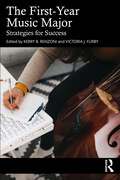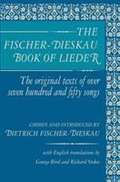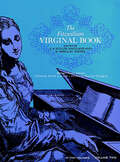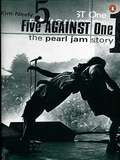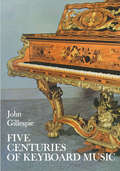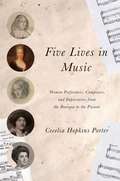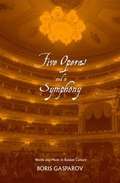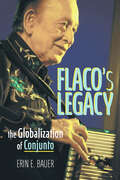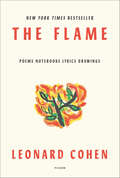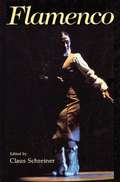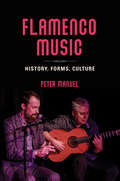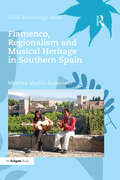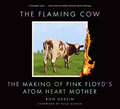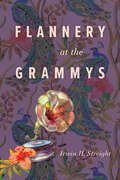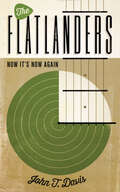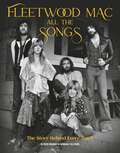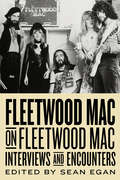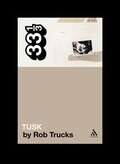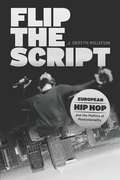- Table View
- List View
The First-Year Music Major: Strategies for Success
by Victoria J. FurbyDesigned to address the many challenges that first-year undergraduate music students often encounter, The First-Year Music Major: Strategies for Success provides concrete approaches that will help anyone embarking on a degree in music develop the knowledge and skills needed to complete their first year successfully. The chapters demystify the path of majoring in music, and address key topics including: Planning a road map for the degree Developing needed musical, academic, professional, practice, and performance skills Building financial, mental, and physical well-being strategies Written by a group of experienced professors and advisors in roles across the faculty of music, this book offers a comprehensive resource for first-year music students that will help them develop foundational skills to pursue music degrees and careers. An online e-resource accompanies the book, providing downloadable worksheets and materials referenced in the chapters. Rooted in research and extensive practical experience, The First-Year Music Major is suited to use both in introductory music courses and by individual students and advisors.
The Fischer-dieskau Book of Lieder: The original text of over seven hundred and fifty songs
by Dietrich Fischer-DieskauThis book presents German original texts with English translations in line-by-line format of over 750 German Lieder, including texts for Beethoven's An die ferne Geliebte and Six Gellert Lieder; Brahms's Die schöne Magelone, Four Serious Songs and Gypsy Songs; Paul Hindemith's Life of Mary; Mahler's Song of the Earth, Kindertotenlieder and Song of a Wayfarer; Schubert's Die schöne Müllerin, Die Winterreise and Schwanengesang; Schumann's Dichterliebe, Liederkreis collections and Frauenliebe und -leben; Richard Strauss's Four Last Songs; Hugo Wolf's Italian and Spanish songbooks; Boris Blacher's 3 Psalms in Martin Luther's German; Richard Wagner's Five Poems for a Woman's Voice; Schönberg's Fifteen Poems from "The Book of the Hanging Gardens"; Alban Berg's Seven Early Lieder; Peter Cornelius's Trauer und Trost and Weihnachtslieder. Added to these song collections are nearly 500 texts for individual songs set by Beethoven, Brahms, Mozart, Schubert, Schumann, Richard Strauss, Zemlinsky and others. Fischer-Dieskau introduces the collection with an essay and individual song texts are in alphabetical order. The Index of titles and first lines at the back of the book serves as the table of contents. DAISY markup makes perusing this book easy and electronic searching makes it an excellent companion for anyone who has recordings of these songs or who would like to sing them. Dieskau does not include the text for Wagner's Wesendonck Lieder.
The Fitzwilliam Virginal Book, Volume Two (Dover Music for Piano #2)
by J. Fuller Maitland W. B. SquireThe Fitzwilliam Virginal Book is "the most remarkable, and in many respects the most valuable collection of Elizabethan keyboard music," according to Grove's Dictionary of Music and Musicians. Of unknown origins, the previously scarce collector's item is now available at popular prices for the first time. The pieces herein, while composed for the virginal, can be played without difficulty on piano or any other keyboard instrument.The nearly 300 airs, variations, fantasies, toccatas, pavanes, galliards, allemandes, and courantes in these two volumes include some of the finest examples of Elizabethan and Jacobean music: compositions by Thomas Morley, Orlando Gibbons, Giles Farnaby, Thomas Warrock, Ferdinando Richardson, Peter Phillips, Thomas Tompkins, and practically every other composer of the virginalistic school. John Bull and William Byrd, two of England's greatest composers, are represented by over 100 works.J. A. Fuller Maitland and W. Barclay Squire set the music into modern notation, preserving faithfully the intent of the composers. The peculiarities of the original notation, time signatures, fingering, and the like as well as the ecclesiastical modes and accidentals employed by the composers are explained in a lucid introduction, which also discusses the history of the manuscript, the individuals connected with it, the composers, and the structure of the virginal.For this extensively revised and corrected Dover edition, Blanche Winogron, noted musicologist and performer, undertook a thorough critical reexamination of the 1899 Maitland Squire edition by closely comparing it to a copy of the original manuscript (the original is in the Fitzwilliam Museum in Cambridge, England) from which it was transcribed. Numerous minor errors, misprints, and misinterpretations in the Maitland/Squire transcription have been corrected, resulting in a new edition closer to the original than ever before.The period of this music was one of transition from the older principles and systems of notation to modern theories. This, then, is a most important document for musicologists and others interested in the history of music. But it is also a source of delight, allowing for countless hours at the keyboard for all lovers of good music.
Five against One
by Kim NeelyMore than any other band, Pearl Jam embodies the alternative style that dominates rock today. From their early days as fame-ducking grunge pioneers, through their headline-making battle with Ticketmaster, to their current status as self-assured survivors, Five Against One brings to life Pearl Jam's tumultuous ascent to superstardom in rich detail. A compelling portrait of the band's elusive leader Eddie Vedder and family photos never seen before by the public make this a must-have for every Pearl Jam fan.
Five Centuries of Keyboard Music (Dover Books On Music: Piano)
by John GillespieMost listeners can readily distinguish between the works of such keyboard giants as Bach, Beethoven, and Liszt and between various national schools, but when it comes to defining what the differences are, relating the various interconnections, discovering information on the hundreds of other keyboard composers, and actually finding playing editions, the task becomes much greater. To aid the performer, the listener, and the student in all these important aspects, John Gillespie, practicing pianist and harpsichordist and Professor of Music at the University of California, has prepared this, the first work in English to comprehensively survey the development of solo keyboard works.Introductory chapters of Gillespie's literate and authoritative survey cover the backgrounds and development of keyboard instruments and early keyboard music. Later chapters cover the history as it progressed stylistically through the hands of individual composers and various schools from the sixteenth to the twentieth centuries. Emphasis is given to the masters whose works continue to be heard most often today -- Bach, Handel, Mozart, Haydn, Beethoven, Schubert, Schumann, Brahms, Liszt, Chopin, Debussy, Ravel, and others. Major consideration, too, is given to composers who were influential in developing national styles. All of the Western countries -- from Germany, Italy, France, and England to Norway, Russia, the United States, South America, and Canada -- are included. Finally, there are discussions of now little-known composers who were important in their times. Altogether over 350 composers are discussed. Important, also, in John Gillespie's survey are his various other aids -- guides to a carefully selected body of playing editions and other historical works, a great number of musical illustrations, and a 195-item glossary of musical terms.Individual chapters and articles will be helpful in quickly locating information about particular composers, schools, and works. Footnotes and bibliographies will be important for the performer, student, or professional looking for either playing editions or further information. The book as a whole, however, when read as it should be from cover to cover, will give the reader a very good understanding of the development of works for the solo keyboard, of the traditions, and the interconnections, with accurate coverage from the first known works of the sixteenth century up to the exciting modern composers.
Five Flavors of Dumb
by Antony John<P>The Challenge: Piper has one month to get the rock band Dumb a paying gig. <P> The Deal: If she does it, Piper will become the band's manager and get her share of the profits. <P>The Catch: How can Piper possibly manage one egomaniacal pretty boy, one talentless piece of eye candy, one crush, one silent rocker, and one angry girl? And how can she do it when she's deaf? <P>Piper can't hear Dumb's music, but with growing self-confidence, a budding romance, and a new understanding of the decision her family made to buy a cochlear implant for her deaf baby sister, she discovers her own inner rock star and what it truly means to be a flavor of Dumb.<P><P> <b>Winner of the Schneider Family Book Award</b>
Five Graphic Music Analyses (Dover Books on Music)
by Heinrich SchenkerThe concepts of theorist Heinrich Schenker offer a unique method of structural analysis that differentiates between harmonic and contrapuntal functions of chords, emphasizing the relative significance of all tones in terms of motion and direction in the achievement of organic tonal unity.These sketches study the musical architecture of five compositions from three stylistic periods: two compositions by Bach -- " Ich bin's, ich sollte büssen" from the St. Matthew Passion and the Prelude No. 1 in C Major from Book I of The Well-Tempered Clavier; the development section from the first movement of Haydn's Sonata for Piano in E-Flat Major; and two ètudes by Chopin -- in F Major, Op. 10, No. 8, and in C Minor, Op. 10, No. 12. Each composition is analyzed in a series of sketches, with selective interpretations of chords, indications of voice leading, and other easily understood devices that demonstrate Schenker's theories and their expression.
Five Lives in Music: Women Performers, Composers, and Impresarios from the Baroque to the Present
by Cecelia Hopkins PorterRepresenting a historical cross-section of performance and training in Western music since the seventeenth century, Five Lives in Music brings to light the private and performance lives of five remarkable women musicians and composers. Elegantly guiding readers through the Thirty Years War in central Europe, elite courts in Germany, urban salons in Paris, Nazi control of Germany and Austria, and American musical life today, as well as personal experiences of marriage, motherhood, and widowhood, Cecelia Hopkins Porter provides valuable insights into the culture in which each woman was active. Porter begins with the Duchess Sophie-Elisabeth of Braunschweig-Lueneberg, a harpsichordist who also presided over seventeenth-century North German court music as an impresario. At the forefront of French Baroque composition, composer Elisabeth-Claude Jacquet de La Guerre bridged a widening cultural gap between the Versailles nobility and the urban bourgeoisie of Paris. A century later, Josephine Lang, a prodigiously talented pianist and dedicated composer, participated at various times in the German Romantic world of lieder through her important arts salon. Lastly, the twentieth century brought forth two exceptional women: Baroness Maria Bach, a composer and pianist of twentieth-century Vienna's upper bourgeoisie and its brilliant musical milieu in the era of Gustav Mahler, Richard Strauss, Arnold Schoenberg, and Erich Korngold; and Ann Schein, a brilliant and dauntless American piano prodigy whose career, ongoing today though only partially recognized, led her to study with the legendary virtuosos Arthur Rubinstein and Myra Hess. Mining musical autographs, unpublished letters and press reviews, interviews, and music archives in the United States and Europe, Porter probes each musician's social and economic status, her education and musical training, the cultural expectations within the traditions and restrictions of each woman's society, and other factors. Throughout the lively and focused portraits of these five women, Porter finds common threads, both personal and contextual, that extend to a larger discussion of the lives and careers of female composers and performers throughout centuries of music history.
Five Operas and a Symphony: Word and Music in Russian Culture
by Boris GasparovBoris Gasparov gazes through the lens of music to find an unusual perspective on Russian cultural and literary history. He discusses six major works of Russian music from the nineteenth and twentieth centuries, showing the interplay of musical texts with their literary and historical sources within the ideological and cultural contexts of their times. Each musical work becomes a tableau representing a moment in Russian history, and together the works form a coherent story of ideological and aesthetic trends as they evolved in Russia from the time of Pushkin to the rise of totalitarianism in the 1930s. Gasparov discusses Glinka's Ruslan and Ludmilla (1842), Mussorgsky's Boris Godunov (1871) and Khovanshchina (1881), Tchaikovsky's Eugene Onegin (1878) and The Queen of Spades (1890), and Shostakovich's Fourth Symphony (1934). Offering new interpretations to enhance our understanding and appreciation of these important works, Gasparov also demonstrates how Russian music and cultural history illuminate one another.
Flaco’s Legacy: The Globalization of Conjunto (Music in American Life)
by Erin E. BauerA combination of button accordion and bajo sexto, conjunto originated in the Texas-Mexico borderlands as a popular dance music and became a powerful form of regional identity. Today, listeners and musicians around the world have embraced the genre and the work of conjunto masters like Flaco Jiménez and Mingo Saldívar. Erin E. Bauer follows conjunto from its local origins through three processes of globalization--migration via media, hybridization, and appropriation--that boosted the music’s reach. As Bauer shows, conjunto’s encounter with globalizing forces raises fundamental questions. What is conjunto stylistically and socioculturally? Does context change how we categorize it? Do we consider the music to be conjunto based on its musical characteristics or due to its performance by Jiménez and other regional players? How do similar local genres like Tejano and norteño relate to ideas of categorization? A rare look at a fascinating musical phenomenon, Flaco’s Legacy reveals how conjunto came to encompass new people, places, and styles.
Flagstad: A Personal Memoir
by Edwin McArthurAn intimate, no-holds-barred, light-and-dark portrait of the great Norwegian soprano/opera singer Kirsten Flagstad from her first appearance at the Metropolitan Opera House on February 2, 1935, to her death on December 7, 1962. Edwin McArthur was Flagstad's accompanist--and often her orchestral conductor as well--throughout her American career. He knew her in her hours of triumph, during the dramatic struggles through which the Second World War put her, during her trial in Norway (at which he testified and gave depositions), during her painful return to the United States as a falsely accused "quisling" after the war, and in the strange period of her partial--and then complete--retirement. Not a book about music (McArthur does quote some opinions of Flagstad the artist and occasionally expresses his own reactions, but he preponderantly sticks to the subject of Flagstad the woman), this is an intensely personal portrait. Its subject emerges as devoted, blindly selfish, alternately generous and cruel even to her own children, wayward, overwhelming, finally inscrutable, but always fascinating. The book also provides one view of the strange (and at times dirty) inside business dealings in the world of opera and concert.
Flagstad: Singer of the Century
by Howard VogtA biography of the great Norwegian soprano who had a world-wide reputation but is especially known for her singing at the Met in New York. She returned to Norway during World War II which caused considerable controversy and split her career into two phases. She is especially known for her Wagner roles.
The Flame: Poems, Notebooks, Lyrics, Drawings
by Leonard CohenA Stirring Mosaic of Leonard Cohen: Poet, Lyricist and ArtistDive into The Flame, a profound exploration of the celebrated poet and musician, Leonard Cohen. This final work, hailed as a top read by Vogue, TIME, and The Washington Post, offers a rich blend of his life's work, sure to ignite the imagination of Cohen's enduring fans and newcomers alike.With his works spanning generations and continents, Cohen is a remarkable figure who continues to captivate audiences—his ground trodden upon by “very, very few” (Bono).The Flame provides a deeply personal view of Cohen, weaving a vivid tapestry of poems, diary excerpts, lyrics, and intimate hand-drawn self-portraits. This trailblazing collection presents a multi-faceted view of a life lived passionately.“This volume contains my father’s final efforts as a poet,” writes Cohen’s son, Adam Cohen, in his foreword. “It was what he was staying alive to do, his sole breathing purpose at the end.”Whether you’re a lyricist, musician, or a Cohen devotee, The Flame is a glowing tribute to Leonard Cohen that’s sure to inspire and captivate.
Flamenco: Gypsy Dance and Music from Andalusia
by Claus Schreiner Mollie C. PetersThis book traces the history and development of flamenco, the stirring form of folk dance created by the gypsies of the Andalusian region of Spain in the 19th century and still popular today.
Flamenco Music: History, Forms, Culture
by Peter ManuelAn expert explains and analyzes the beloved art form An iconic symbol of Spain, flamenco has become a global phenomenon. Peter Manuel offers English-language readers a rare portrait of the music’s history, styles, and cultural impact. Beginning with flamenco’s Moorish and Roma influences, Manuel follows the music’s evolution through its consolidation in the mid-1800s and on to the vibrant contemporary scene. An investigation of flamenco’s major song-types looks at rhythm and compás, guitar technique, and many other aspects of the music while Manuel’s description and analysis of the repertoire range from soleares and bulerías to tangos. His overview of contemporary flamenco culture provides insight into issues that surround the music, including globalization, gender dynamics, notions of ownership, and the ongoing debates on purity versus innovation and the relative roles played by Gitanos and non-Gitanos. Multifaceted and entertaining, Flamenco Music is an in-depth study of the indelible art form that inspires enthusiasts and practitioners around the world.
Flamenco, Regionalism and Musical Heritage in Southern Spain (SOAS Musicology Series)
by Matthew Machin-AutenriethFlamenco, Regionalism and Musical Heritage in Southern Spain explores the relationship between regional identity politics and flamenco in Andalusia, the southernmost autonomous community of Spain. In recent years, the Andalusian Government has embarked on an ambitious project aimed at developing flamenco as a symbol of regional identity. In 2010, flamenco was recognised as an Intangible Cultural Heritage of Humanity by UNESCO, a declaration that has reinvigorated institutional support for the tradition. The book draws upon ethnomusicology, political geography and heritage studies to analyse the regionalisation of flamenco within the frame of Spanish politics, while considering responses among Andalusians to these institutional measures. Drawing upon ethnographic research conducted online and in Andalusia, the book examines critically the institutional development of flamenco, challenging a fixed reading of the relationship between flamenco and regionalism. The book offers alternative readings of regionalism, exploring the ways in which competing localisms and disputed identities contribute to a fresh understanding of the flamenco tradition. Matthew Machin-Autenrieth makes a significant contribution to flamenco scholarship in particular and to the study of music, regionalism and heritage in general.
The Flaming Cow: The Making of Pink Floyd's Atom Heart Mother
by Ron Geesin Nick Mason‘a fantastic read . . . witty and incredibly detailed’ Brain DamageBy the late 1960s, popular British prog-rock group Pink Floyd were experiencing a creative voltage drop, so they turned to composer Ron Geesin for help in writing their next album.The Flaming Cow offers a rare insight into the brilliant but often fraught collaboration between the band and Geesin, the result of which became known as Atom Heart Mother – the title track from the Floyd’s first UK number-one album. From the time drummer Nick Mason visited Geesin’s damp basement flat in Notting Hill, to the last game of golf between bassist Roger Waters and Geesin, this book is an unflinching account about how one of Pink Floyd’s most celebrated compositions came to life.Alongside photographs from the Abbey Road recording sessions and the subsequent performances in London and Paris, this new and updated edition of The Flaming Cow describes how the title was chosen, why Geesin was not credited on the record, how he left Hyde Park in tears, and why the group did not much like the work. Yet, more than fifty years on, Atom Heart Mother remains a much-loved record with a burgeoning cult status and an increasing number of requests for the score from around the world. It would appear there’s still life in the Flaming Cow yet.
Flannery at the Grammys
by Irwin H. StreightA devout Catholic, a visionary—and some say prophetic—writer, Flannery O’Connor (1925–1964) has gained a growing presence in contemporary popular culture. While O’Connor professed that she did not have an ear for music, allusions to her writing appear in the lyrics and narrative form of some of the most celebrated musicians on the contemporary music scene. Flannery at the Grammys sounds the extensive influence of this southern author on the art and vision of a suite of American and British singer-songwriters and pop groups. Author Irwin H. Streight invites critical awareness of O’Connor’s resonance in the products of popular music culture—in folk, blues, rock, gospel, punk, heavy metal, and indie pop songs by some of the most notable figures in the popular music business. Streight examines O'Connor's influence on the art and vision of multiple Grammy Award winners Bruce Springsteen, Lucinda Williams, R.E.M., and U2, along with celebrated songwriters Nick Cave, PJ Harvey, Sufjan Stevens, Mary Gauthier, Tom Waits, and others. Despite her orthodox religious, and at times controversial, views and limited literary output, O’Connor has left a curiously indelible mark on the careers of the successful musicians discussed in this volume. Still, her acknowledged influence and remarkable presence in contemporary pop and rock songs has not been well noted by pop music critics and/or literary scholars. Many years in the making, Flannery at the Grammys achieves groundbreaking work in cultural studies and combines in-depth literary and pop music scholarship to engage the informed devotee and the casual reader alike.
The Flatlanders: Now It's Now Again (American Music Series)
by John T. Davis&“Conservative West Texas spawns radical creativity and lifelong bonds of friendship in this story of an unlikely band&” from the renowned music journalist (Kirkus Reviews). A group of three friends who made music in a house in Lubbock, Texas, recorded an album that wasn&’t released and went their separate ways into solo careers. That group became a legend and then—twenty years later—a band. The Flatlanders—Joe Ely, Jimmie Dale Gilmore, and Butch Hancock—are icons in American music, with songs blending country, folk, and rock that have influenced a long list of performers, including Robert Earl Keen, the Cowboy Junkies, Ryan Bingham, Terry Allen, John Hiatt, Hayes Carll, Lucinda Williams, Steve Earle, and Lyle Lovett. In The Flatlanders: Now It&’s Now Again, Austin author and music journalist John T. Davis traces the band&’s musical journey. He explores why music was, and is, so important in Lubbock and how earlier West Texas musicians such as Buddy Holly and Roy Orbison, as well as a touring Elvis Presley, inspired the young Ely, Gilmore, and Hancock. Davis recounts their first year (1972–1973) as a band, during which they recorded the songs that, decades later, were released as the albums More a Legend Than a Band and The Odessa Tapes. He follows the three musicians through their solo careers and into their first decade as a (re)united band, in which they cowrote songs for the first time on the albums Now Again and Hills and Valleys and recovered their extraordinary original demo tape, lost for forty years. Many roads later, the Flatlanders are finally both a legend and a band.
Fleetwood: My Life and Adventures in Fleetwood Mac
by Mick Fleetwood Stephen DavisHere, for the first time, one of rock-and-roll's mastermusicians of the 60s describes how he nurtured a band that dominated the seventies, came back in the eighties, and survives into the nineties--its fourth decade--as one of the most-loved acts in the world
Fleetwood Mac All the Songs: The Story Behind Every Track (All the Songs)
by Olivier Roubin Romuald OllivierFleetwood Mac All the Songs dives deep into the unique and often fraught recording history of the mega-bestselling and hugely influential rock band. Packed with captivating photographs and fascinating behind-the-scenes details, it&’s a must-have for any music history fan. Fleetwood Mac is the one of the most enduring, endearing, and drama-filled bands in rock history whose triumphs, struggles, and music continue to resonate with generations of listeners. This thorough dissection of every album and every song ever released by the beloved rock group follows the band's many iterations from their self-titled debut in 1968 (when they were known as Peter Green's Fleetwood Mac) to the classic Rumours era featuring the core line-up of Lindsey Buckingham, Mick Fleetwood, Christine McVie, John McVie, and Stevie Nicks, all the way up to the passing of Christine McVie in November 2022. The writing and recording process of each and every track is dissected, discussed, and analyzed by authors Olivier Roubin and Romuald Ollivier, through the band's many breakups and shakeups.Fleetwood Mac All the Songs draws upon years of research to recount the circumstances that led to the composition of every song the band ever wrote, as well as the details behind their in-studio recording process. Also featuring hundreds of photographs, including rare black-and-white publicity stills, images of instruments used by the band, and engaging shots of the musicians in‑studio, this is a must-have book for any true fan of classic rock.
Fleetwood Mac on Fleetwood Mac: Interviews and Encounters
by Sean EganFleetwood Mac was a triumph from the beginning--their first album was the UK's bestselling album of 1968. After some low points--when founder Peter Green left, some fans felt that the band continuing was sacrilege--Lindsey Buckingham and Stevie Nicks joined, and the band's 1977 album Rumours became one of history's immortals, a true classic that remained in the charts for years and public affection forever. In the press, the ethereal Californian Stevie Nicks, the tormented rocker Lindsey Buckingham, the dignified English rose Christine McVie, the blunt-speaking John McVie, and the loquacious Mick Fleetwood have all regularly been astoundingly candid. This collection of interviews across the entirety of Fleetwood Mac's career features articles from such celebrated publications as Crawdaddy, New Musical Express, Circus, Creem, Mojo, Goldmine, Classic Rock, Blender, and Elle, as well as interviews that have never previously appeared in print. In it, readers will learn the Fleetwood Mac story from the band members' own mouths, and experience it contemporaneously rather than through hindsight.
Fleetwood Mac's Tusk (33 1/3 Ser. #77)
by Rob TrucksAfter Rumours became the best-selling single album of all-time, Fleetwood Mac asked Warner Brothers Records to buy them a studio (the label refused, costing both Warner Brothers and the band significant cash in the long run) and then handed the reins to their guitarist and resident perfectionist Lindsey Buckingham, a fusion of factors that led Tusk to become the first record in history to cross the million dollar threshold in production costs. “You know,” Buckingham told me, “we had this ridiculous success with Rumours. And at some point, at least in my perception, the success of that detached from the music, and it was more about the phenomenon. We were poised to do another album, and I guess because the axiom 'If it works, run it into the ground’ was prevalent then, we were probably poised to do Rumours II. I don’t know how you do that, but somehow my light bulb that went off was, ‘Let’s just not do that. Let’s very pointedly not do that.’” Here, Rob Trucks talks to Lindsey Buckingham, as well as members of Animal Collective, Camper Van Beethoven, the New Pornographers, Wolf Parade, the Fleetwood Mac tribute band. Tusk, and the USC Trojan marching band in order to chart both the story and the impact of an album born of personal obsession and a stubborn unwillingness to compromise.
Flip the Script: European Hip Hop and the Politics of Postcoloniality
by J. Griffith RollefsonHip hop has long been a vehicle for protest in the United States, used by its primarily African American creators to address issues of prejudice, repression, and exclusion. But the music is now a worldwide phenomenon, and outside the United States it has been taken up by those facing similar struggles. Flip the Script offers a close look at the role of hip hop in Europe, where it has become a politically powerful and commercially successful form of expression for the children and grandchildren of immigrants from former colonies. Through analysis of recorded music and other media, as well as interviews and fieldwork with hip hop communities, J. Griffith Rollefson shows how this music created by black Americans is deployed by Senegalese Parisians, Turkish Berliners, and South Asian Londoners to both differentiate themselves from and relate themselves to the dominant culture. By listening closely to the ways these postcolonial citizens in Europe express their solidarity with African Americans through music, Rollefson shows, we can literally hear the hybrid realities of a global double consciousness.
